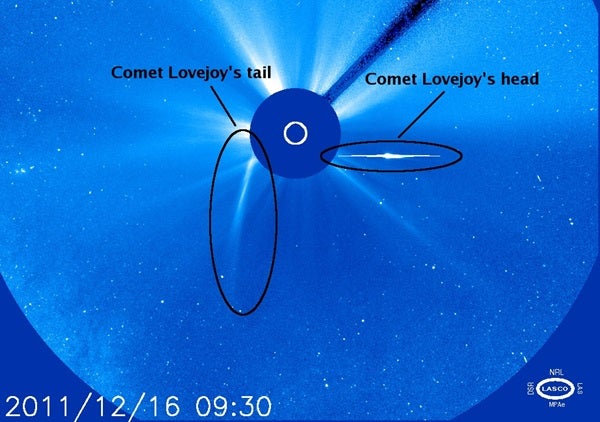On November 27, 2011, Australian astronomer Terry Lovejoy made an exciting discovery: He spotted a Kreutz-family comet, the first time such a comet has been spotted using a ground-based telescope since the 1970s. Kreutz comets have orbits that bring them very close to the Sun.
Scientists were immediately excited about the finding, designated C/2011 W3 (Lovejoy). Discovering a comet before it moves into view of space-based telescopes gives astronomers the opportunity to prepare their telescopes for the best possible observations. Using the joint NASA/European Space Agency Solar Heliophysics Observatory (SOHO) and Solar Terrestrial Relations Observatory (STEREO), as well as NASA’s Solar Dynamics Observatory (SDO), astronomers were able to begin tracking the comet starting Monday, December 12.
They expected Comet Lovejoy to die a fiery death as it plunged through the Sun’s corona at about 7 p.m. EST December 15, coming within 87,000 miles (140,000 kilometers) of our star’s surface. But, amazingly, Lovejoy survived. A video (embedded below) taken by SDO spacecraft shows the icy object emerging from behind the Sun and zipping back off into space.
You can continue to get updates about this sungrazing comet from Karl Battams, a scientist at the Naval Research Laboratory in Washington, D.C., on the Sungrazing Comets website.










